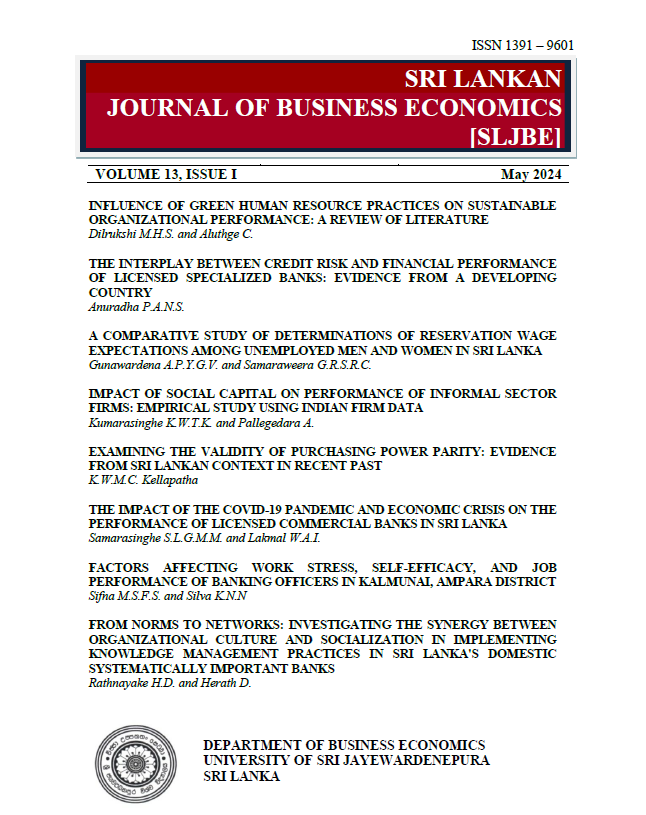EXAMINING THE VALIDITY OF PURCHASING POWER PARITY: EVIDENCE FROM SRI LANKAN CONTEXT IN RECENT PAST
DOI:
https://doi.org/10.31357/sljbe.v13.7507Abstract
This research study examined validity of Purchasing Power Parity (PPP) by studying the behaviour of nominal exchange rate and relative price levels between Sri Lanka and United States (US). The theory of PPP has been used to estimate the relationship between relative prices and nominal exchange rate between two countries. Exchange rate between USD/LKR has been taken as dependent variable whereas Relative Price Index between US Price Index and Colombo Consumer Price Index has been taken into consideration as independent variable. The study has been undertaken with the objective of estimating statistically whether Sri Lanka exists Purchasing Power Parity from January 2015 to December 2022. Data that has been collected for this study is monthly time series data from January 2015 to December 2022, which was collected from the data library of the Central Bank of Sri Lanka (CBSL) and data library of International Monetary Fund (IMF) have been used for this study. The results have been estimated using statistical techniques. These include mainly Augmented Dickey Fuller Test for Unit Root Testing, Descriptive Statistics, Ordinary Least Squared (OLS) method and Granger Causality Test. E-views statistical software is used to analyse the PPP model. Econometric Techniques are used to analyse the regression model.

